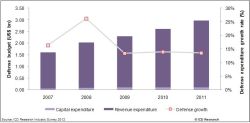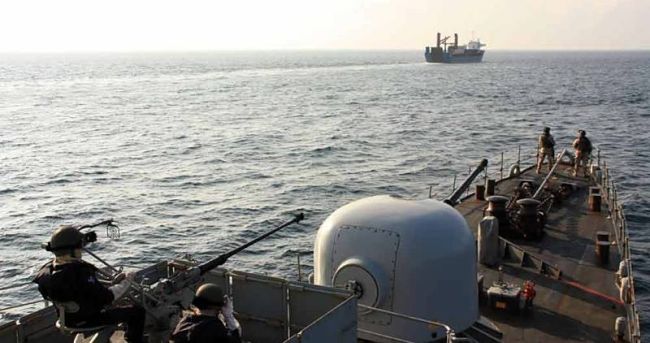London, April 3rd, 2012 – The Argentine defense budget stood at US$2.96 billion in 2011, the result of a CAGR of 16.55% during the review period and this robust growth was primarily driven by high personnel turnover in the armed forces. The government announced a 21% wage increase in the salaries of the armed forces in 2010. In 2012 the defense budget is estimated at US$3.64 billion and is expected to register a CAGR of 16.40% during the forecast period to reach US$6.68 billion by 2016. This robust growth is a result of the need to modernize the Argentine armed forces following decades of underinvestment after defeat in the Falklands war in 1982, and the collapse of the Argentine economy in 2001. The government intends to increase the defense budget of the country from 0.7% of GDP in 2011 to 1.5% of GDP and while the time period for doing so is unclear, it is estimated that the defense budget will increase to 1.2% of GDP by 2016.
 |
| Click to enlarge |
 |
| Here you can find more information about: |
During the review period capital expenditure was allocated an average of 3.6% of the defense budget and this low allocation was due to the high expenditure on salaries and pensions, which account for 70% of the defense budget. However, modernization plans are expected to increase capital expenditure to an average of 7.2% of the defense budget during the forecast period.
Argentine defense expenditure is relatively small and stood at US$2.96 billion in 2011, lower than large spenders such as its neighbour Brazil, which spent US$36 billion in the same year. Despite being the lowest spender in South America, Argentine defense expenditure is expected to reach US$6.7 billion, although this is still relatively low compared to the largest spenders worldwide.
Argentine defense imports peaked in 2007 but declined in subsequent years due to economic constraints forcing the government to postpone defense modernization plans. However, during the forecast period, imports are expected to increase with the resumption of the modernization plans. The US accounts for the majority of imports, with countries such as Spain, Russia, Brazil and Austria also exporting equipment to the Argentine armed forces, although the US is expected to continue to dominate the market during the forecast period. Aircraft and sensors were the largest import categories during 2007–2011 and are expected to constitute the majority of imports over the forecast period. Russia is expected to enter the market through the supply of transport helicopters, the planned purchase of training helicopters from BELL, transport aircraft and fighter aircraft. The domestic defense industry possesses limited capabilities resulting in negligible exports.
About ICD Research
ICD Research is a full-service global market research agency and premium business information brand specializing in industry analysis in a wide set of B2B and B2C markets. ICD Research has access to over 400 in-house analysts and journalists and a global media presence in over 30 professional markets enabling us to conduct unique and insightful research via our trusted business communities. Through its unique B2B and B2C research panels and access to key industry bodies, ICD Research delivers insightful and actionable analysis. The ICD Research survey capabilities grant readers access to the opinions and strategies of key business decision makers, industry experts and competitors as well as examining their actions surrounding business priorities.

 von
von 